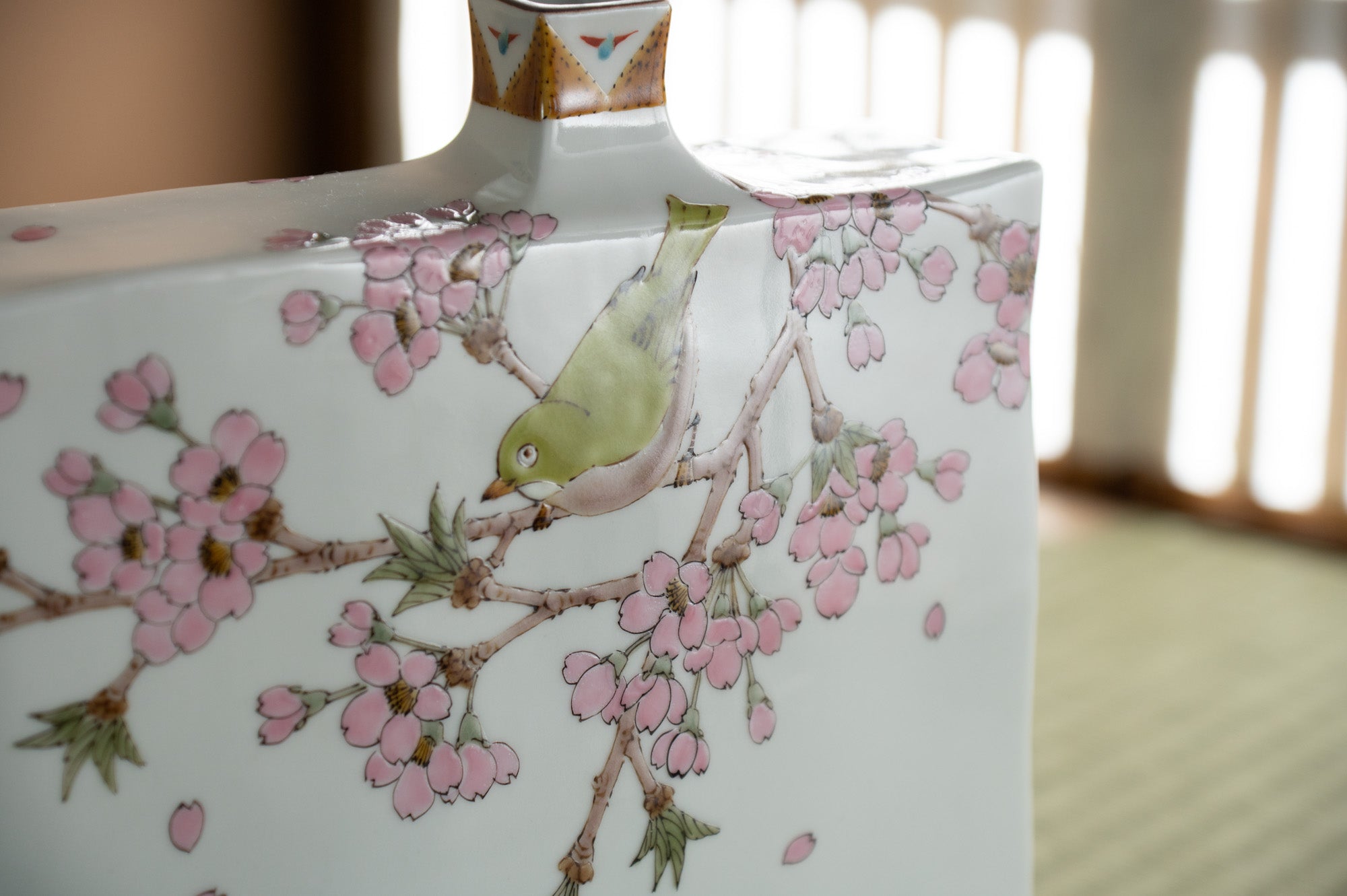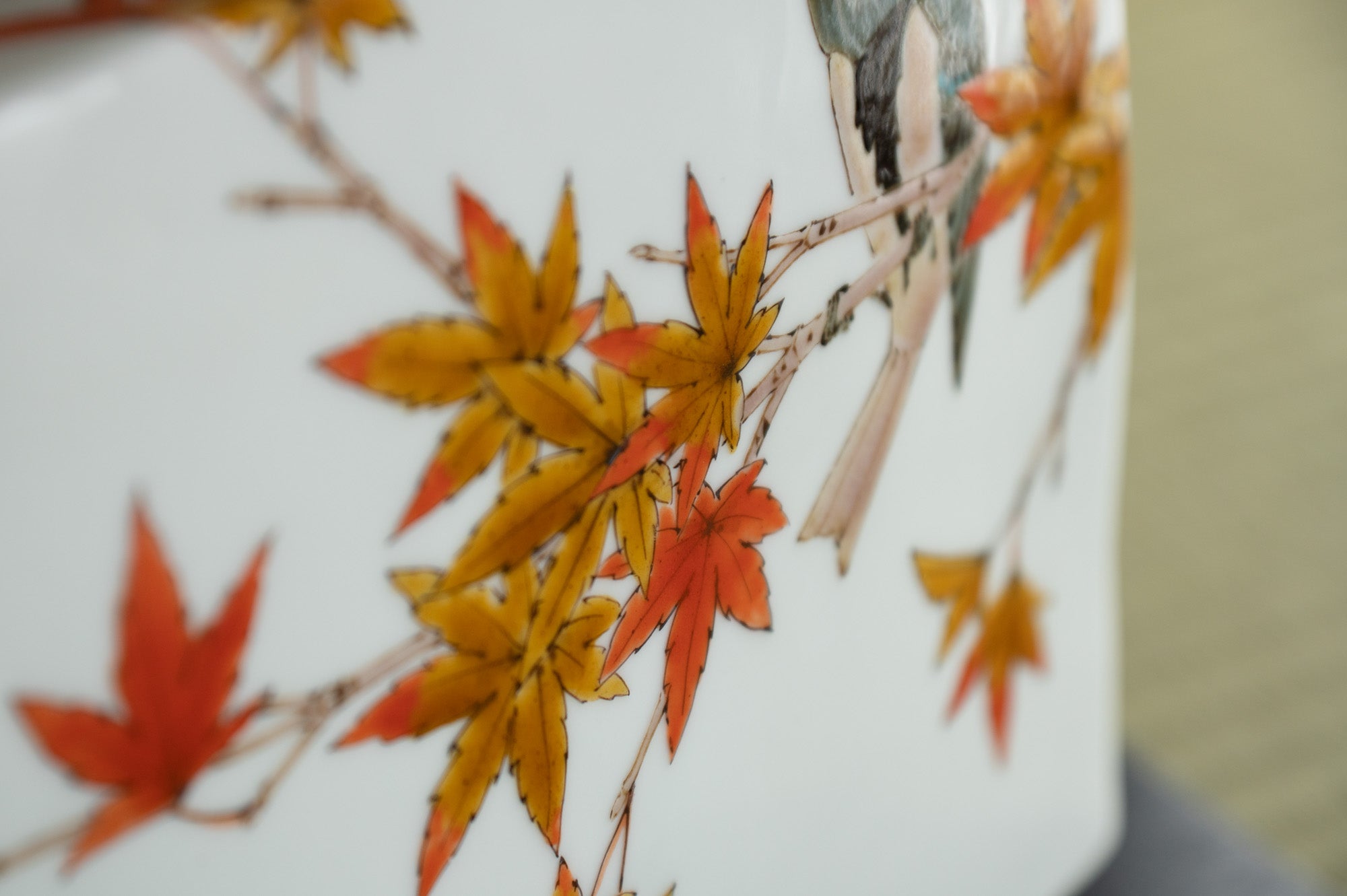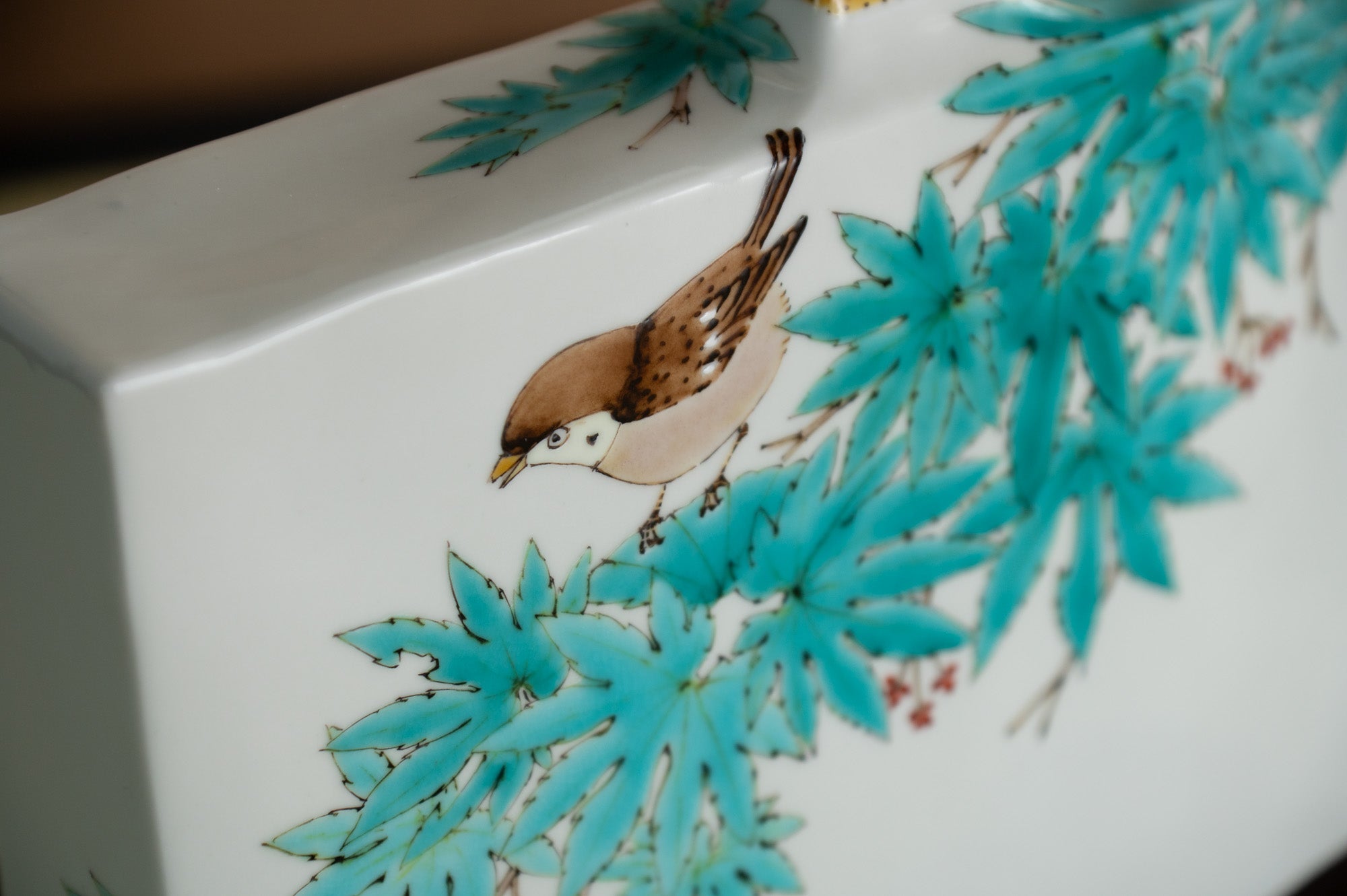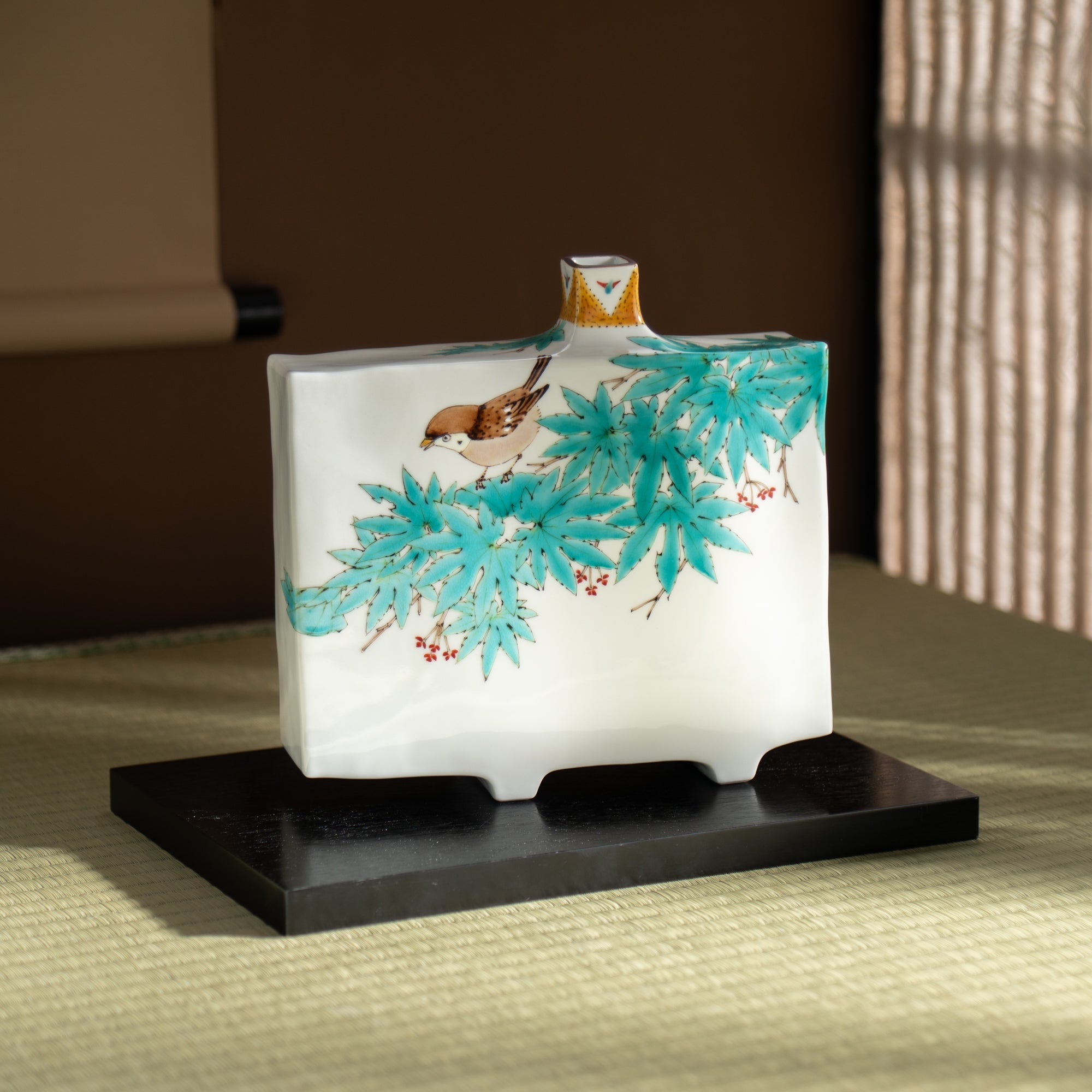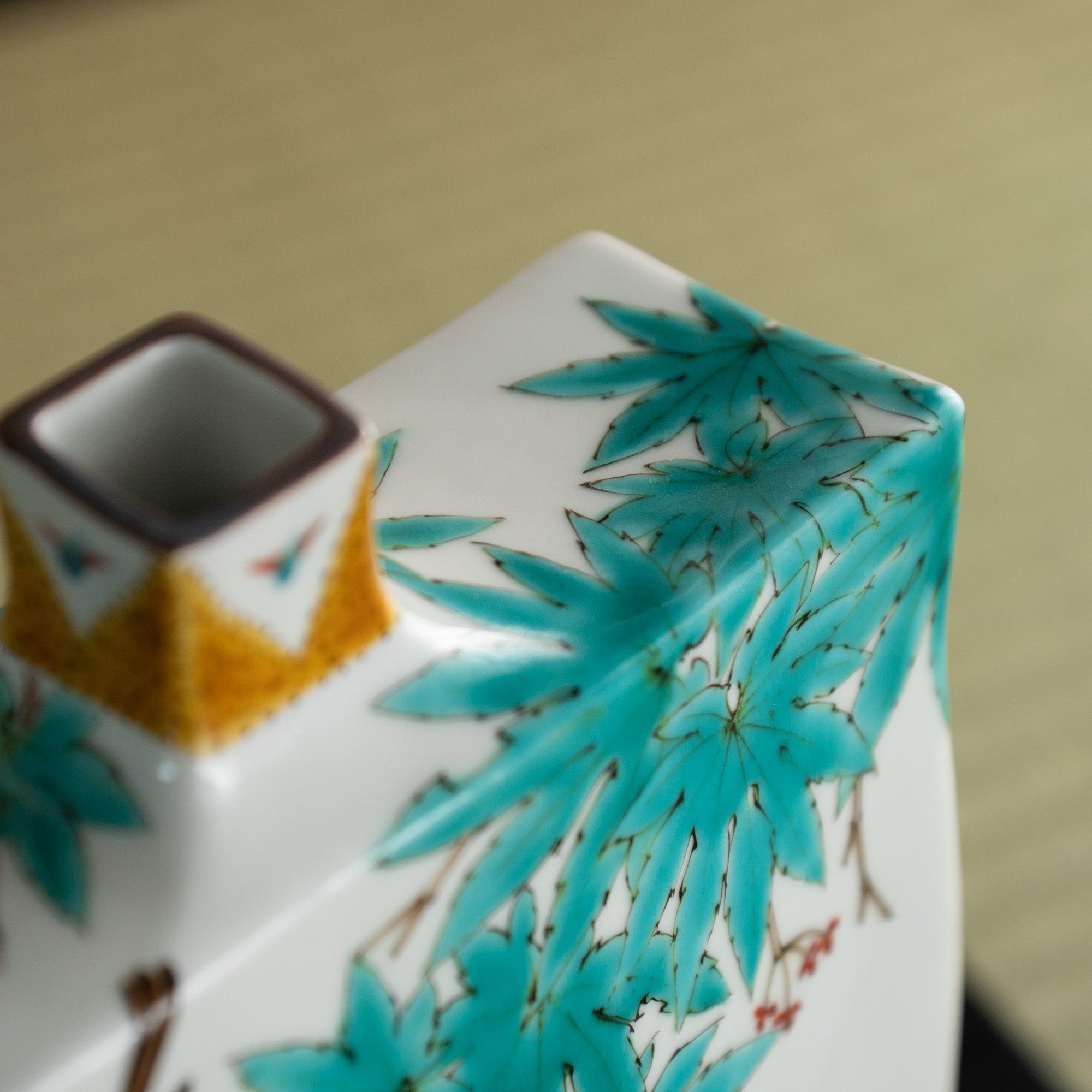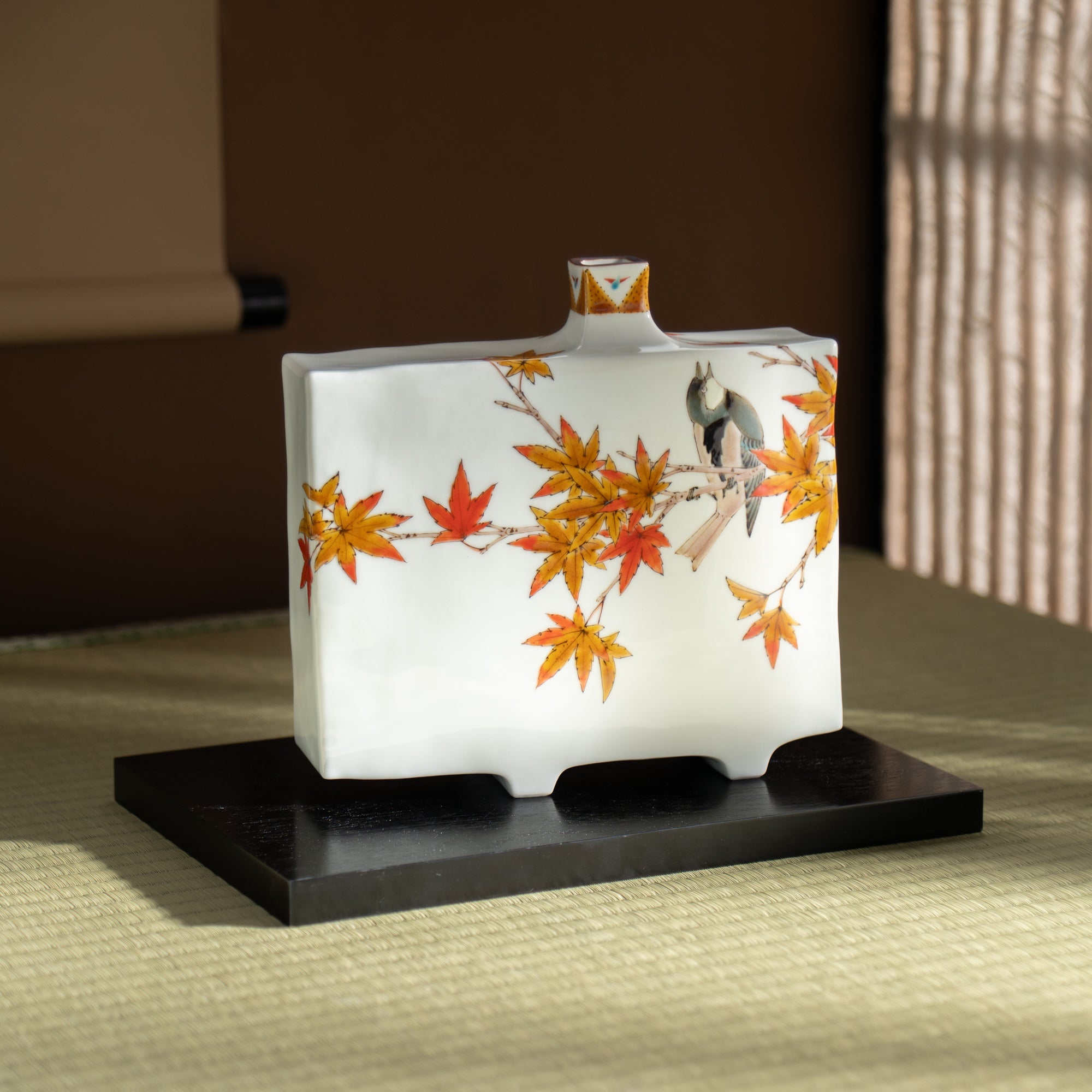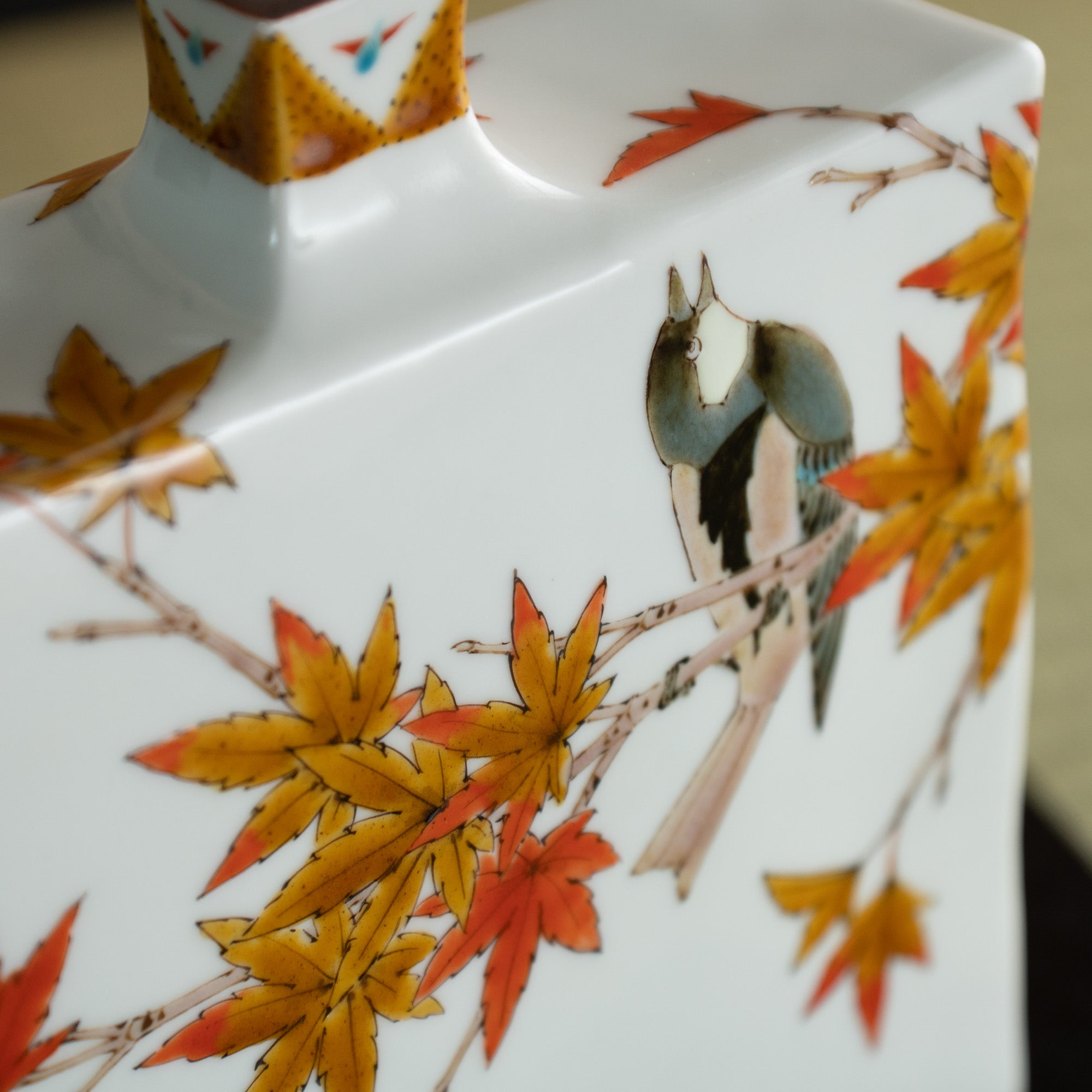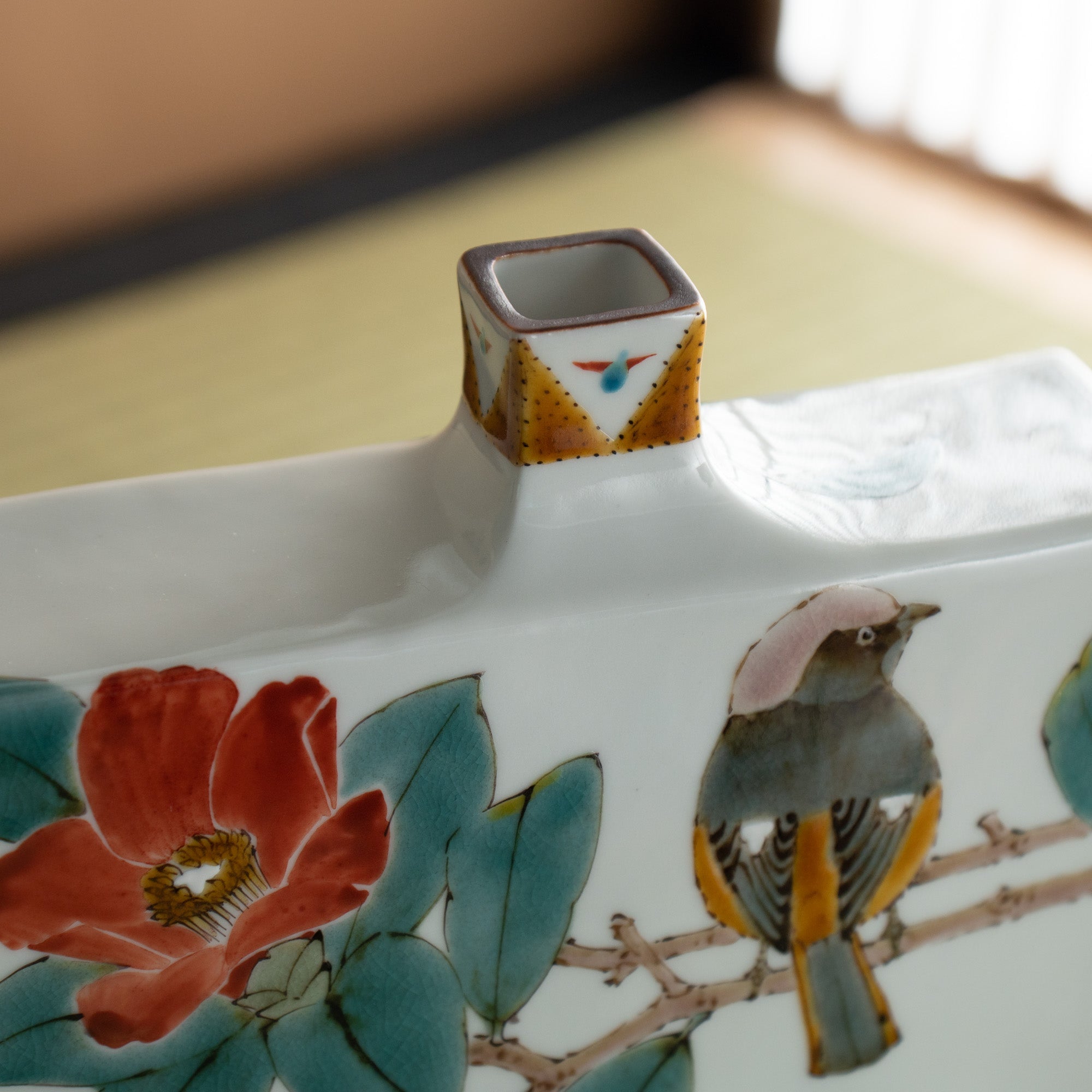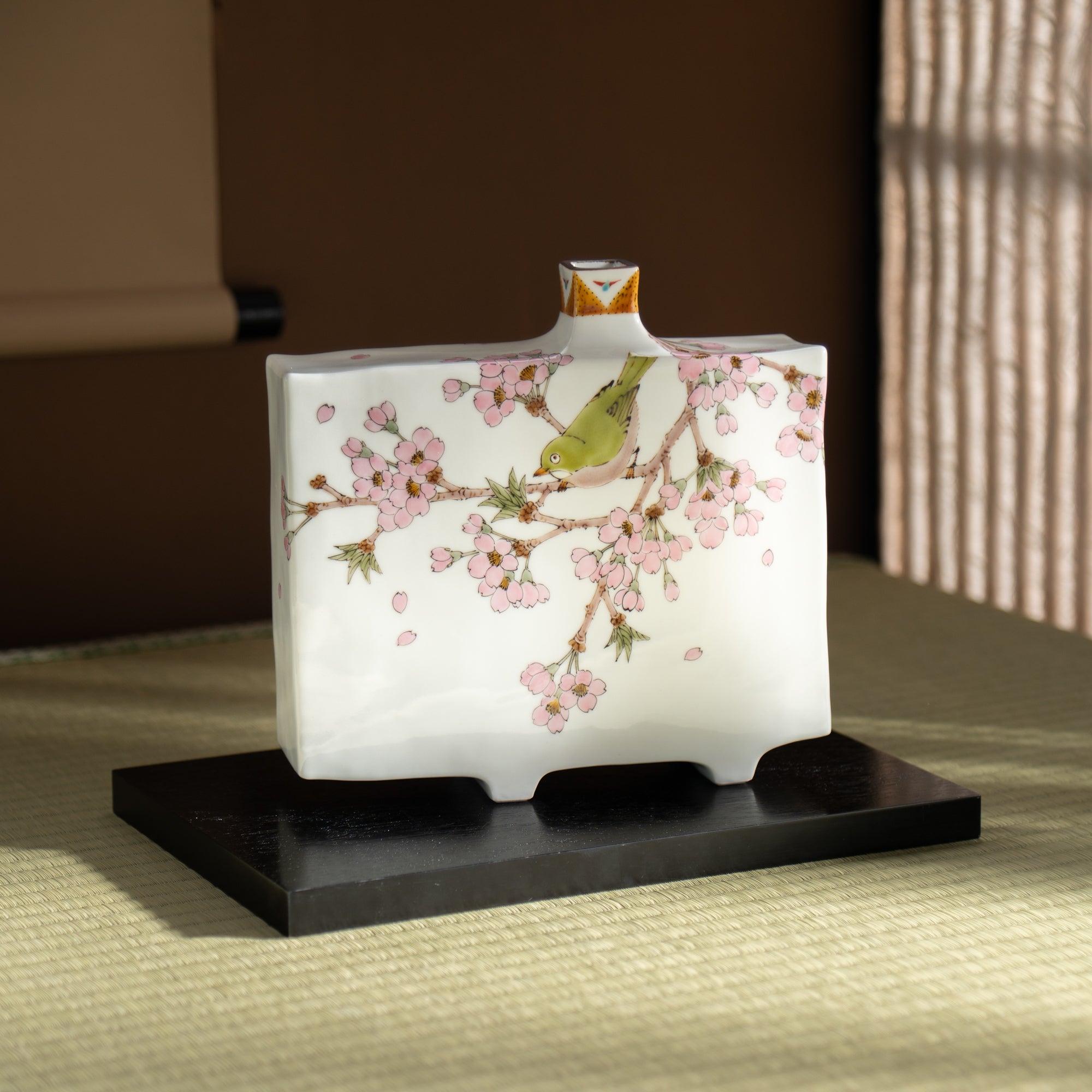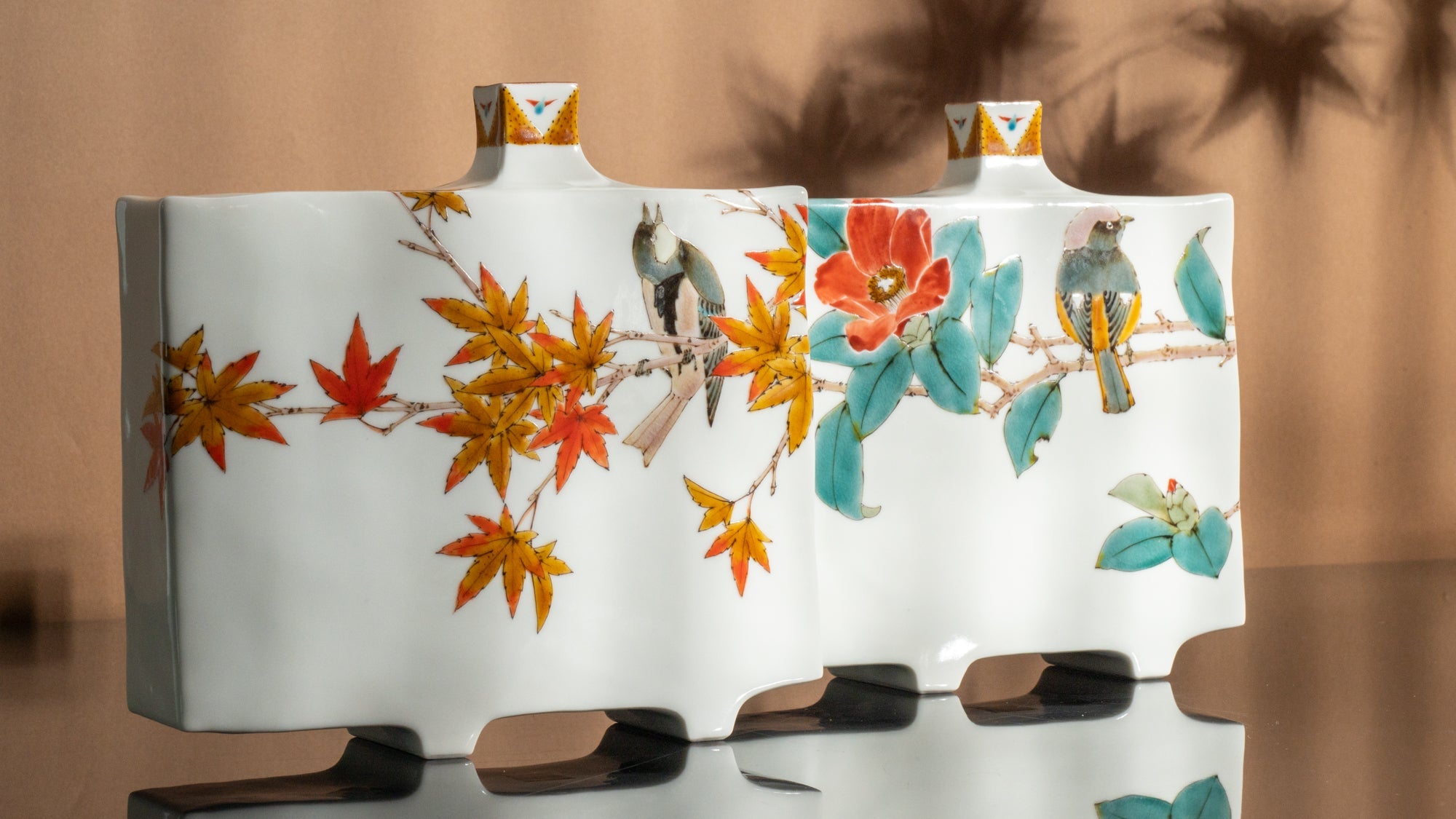
Whispers of Nature
Yamada Yoshiaki
Yamada Yoshiaki’s art captures the beauty of nature across the changing seasons with soft, translucent colors. He intricately replicates the true forms of various trees, flowers, and animals onto Kutani ware, using the artistic technique of negative space to emphasize the natural world's allure.
Realistic Sketches with Harmonious Hues
One of the hallmark styles of Yamada Yoshiaki's work is its striking realism. Every blade of grass, flower, and bird fuels his creative inspiration. With masterful painting techniques and an exquisite sense of color, he brings the beauty of nature to life on Kutani ware. His creations evoke a profound and enchanting connection to the natural world.
Yamada Yoshiaki initially studied painting techniques under the renowned master of Kutani ware, Yamachika Tsuyoshi. He often went on sketching trips, illustrating the same plant in various seasons and states in his sketchbooks. His work depicts details such as the gnarled branches of trees, the traces of insect bites on leaves, and the glossy, fluffy feathers of birds.
In addition to his meticulous drawing skills, Yamada places great emphasis on the use of color. Building on the traditional Kutanigosai, five colors of green, yellow, red, purple, and blue, he has explored and developed fresher, more vibrant hues. He creates numerous color samples, continually experimenting to discover even more beautiful shades. Through his realistic sketches and harmonious hues, he showcases the beauty of nature.
Artfully Incorporates Negative Space
In Japanese aesthetics, the concept of negative space holds paramount significance, permeating the realms of painting, literature, music, architecture, and various traditional cultural expressions. This concept is also present in Buddhism, where emptiness is perceived as abundant, embodying myriad possibilities. In painting, the intentionally left blank spaces between patterns—this seeming void—abstractly evoke a sense of distance. It transcends mere whiteness, offering an expansive realm that invites endless imagination.
Under the guidance of his second mentor, the illustrious artist Takegoshi Yoshiyuki, Yamada Yoshiaki mastered the sophisticated use of negative space. This technique imparts a heightened elegance to his compositions, infusing them with a refined grace. Although Kutani ware is traditionally renowned for its vibrant gosai, lavishly applied to create opulent and intricate designs, Yamada Yoshiaki's approach is distinct. He prefers to delicately sketch patterns that capture the essence of nature.
By incorporating negative space, he invites viewers to engage their imagination, feeling as if they are part of the natural beauty he so artfully presents. Through this interplay of presence and absence, they are transported into the tranquil landscapes of his creation.

Biography
Born in 1948 in Terai, Ishikawa Prefecture, Yamada Yoshiaki holds the prestigious national certification as a master of traditional crafts and a full member of the Japan Kogei Association. He serves as an advisor to the SOZO Bijutsu Artists Association and is a member of the Ishikawa Prefecture Intangible Cultural Property, Kutani Ware Technical Preservation Association.
Throughout his illustrious career, he has received numerous awards, including seven prizes at the Traditional Kutani Ware Craft Exhibition: two Grand Prizes, three Excellence Awards, one Technical Award, and one Encouragement Award. In 2007, he was honored with the Minister of Education, Culture, Sports, Science and Technology Award at the 60th Fine Art Exhibition. His works have been acquired seven times by the Imperial Household Agency of Japan. In 2020, he was awarded The Order of the Sacred Treasure, Silver Rays, by the Japanese Cabinet Office.


